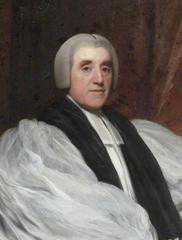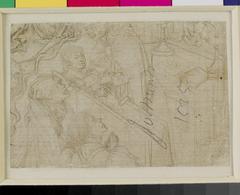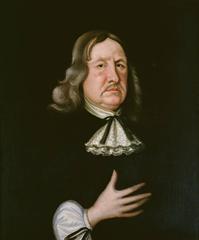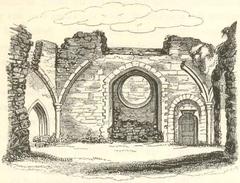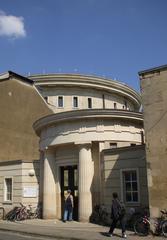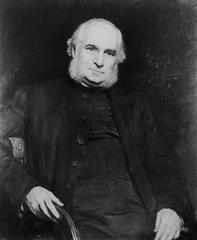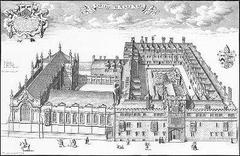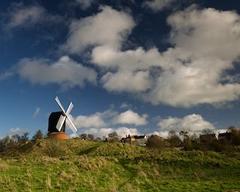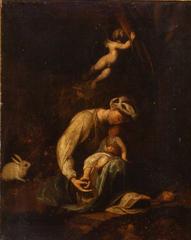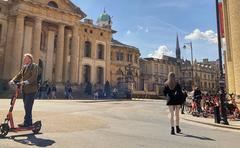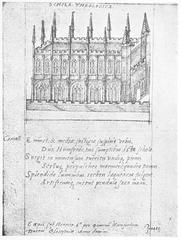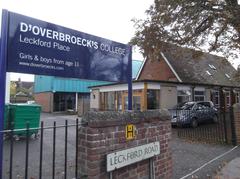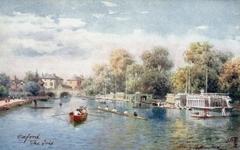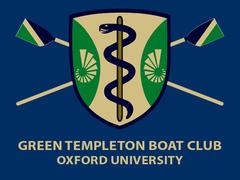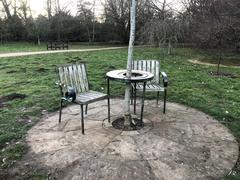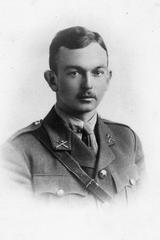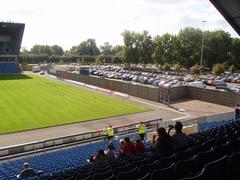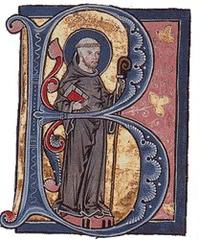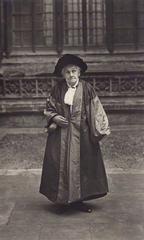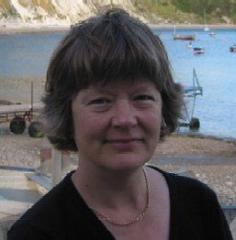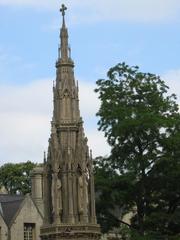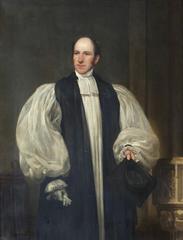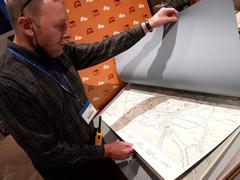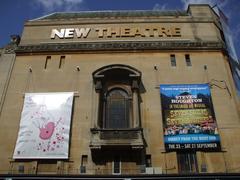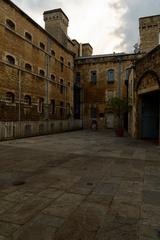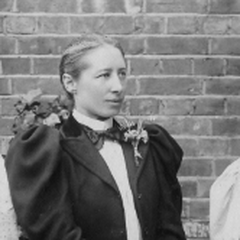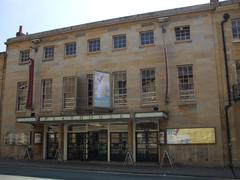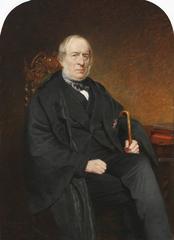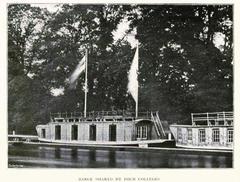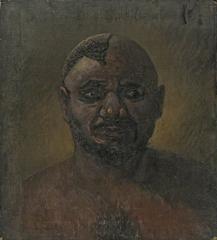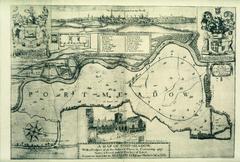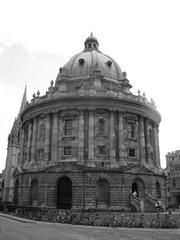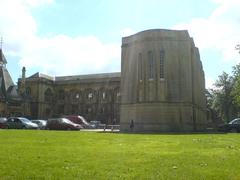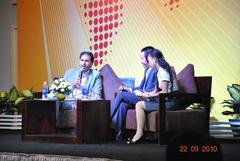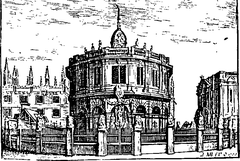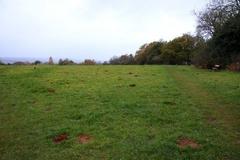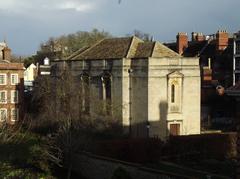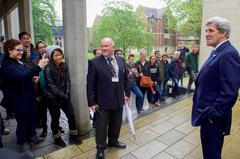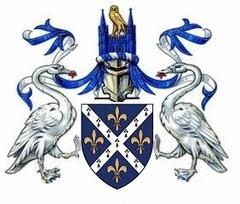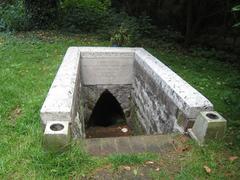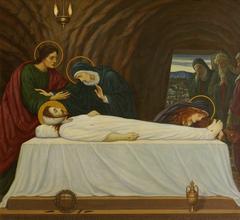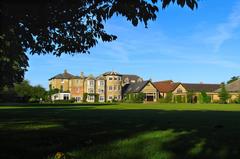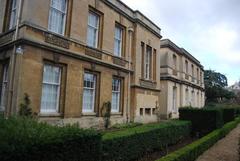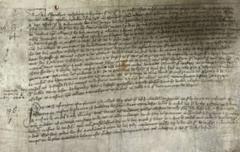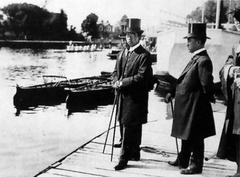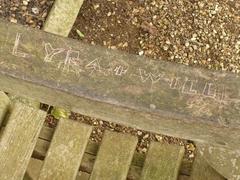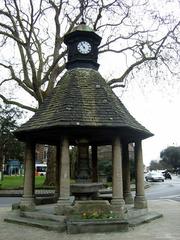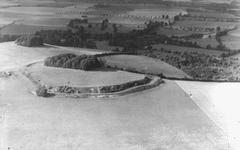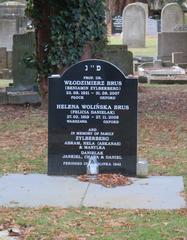
Clarendon Laboratory Oxford: Visiting Hours, Tickets, and Historical Information
Date: 03/07/2025
Introduction
The Clarendon Laboratory, situated at the heart of Oxford, is an iconic testament to the University of Oxford’s dedication to scientific discovery and education. Established in 1872 as the first purpose-built physics laboratory in England, it has played a pivotal role in the advancement of experimental physics and remains a symbol of Oxford’s rich academic and architectural heritage. This comprehensive guide provides essential information for visitors—including historical context, visiting hours, ticketing, accessibility, and nearby attractions—making it ideal for science enthusiasts, historians, students, and tourists planning a visit to Oxford.
Table of Contents
- Historical Overview
- Visitor Information
- Nearby Attractions
- Travel & Accessibility Information
- Frequently Asked Questions (FAQ)
- References and Further Reading
- Conclusion
Historical Overview
Origins and Foundation
The Clarendon Laboratory was established in 1872, marking Oxford’s first dedicated space for physics research and teaching. Its creation was funded by a £10,000 donation from the trustees of Edward Hyde, 1st Earl of Clarendon, reflecting a broader 19th-century movement to enhance scientific education at the university. The laboratory’s foundation signified a decisive shift from a classical curriculum to one embracing experimental sciences (Oxford History).
Architectural Significance
The original building was designed to meet the specific needs of physics research, featuring specialized lecture halls, experimental galleries, and robust construction to support sensitive scientific apparatus. Its rooftop gallery accommodated optical experiments, and its central open space enabled the use of tall equipment. The laboratory’s stability and layout set it apart from other scientific buildings of its era (Archiseek).
Expansion and Evolution
In response to the growing scope of physics, the laboratory expanded several times. Notable additions include the Townsend Building (1910), the Lindemann Building (1948), and the state-of-the-art Beecroft Building (2018). Each phase of expansion has ensured that Clarendon remains at the forefront of physics research and education.
Scientific Contributions
Clarendon Laboratory has been the site of numerous scientific milestones. Among its most famous artifacts is the Oxford Electric Bell, which has been ringing continuously since 1840, driven by mysterious dry pile batteries (ScienceABC; Puzzling Mysteries). Groundbreaking experiments, such as H. G. J. Moseley’s work on X-ray frequencies (leading to Moseley’s Law), and Britain’s first helium liquefaction in 1933, have all taken place within its walls (Oxford Physics Department). The laboratory has also supported refugee scientists, exemplifying Oxford’s global scientific leadership.
Visitor Information
Visiting Hours
Clarendon Laboratory functions primarily as a research and teaching facility. It is not open for casual public visits, but hosts special events and public open days periodically. Visitors should check the Department of Physics events page for up-to-date information on open days, exhibitions, and guided tours.
Tickets and Tours
Entry is typically free during public events and open days, but advance booking is often required due to limited capacity. For ticket availability and booking, visit the Department of Physics events page.
Accessibility
- Building Access: The laboratory complex—including the Lindemann, Townsend, and Simon Buildings—is wheelchair accessible with lifts to most floors and accessible restrooms.
- Parking: Limited on-street parking is available near Keble Street and Museum Road, often filling quickly. The nearest public car parks are in Oxford city centre. Blue Badge holders can find accessible parking at Westgate Shopping Centre, which also offers free Shopmobility scooter and wheelchair hire (Shopmobility Oxford).
- Facilities: No public toilets or amenities are available within the laboratory itself. Accessible toilets can be found at Market Street, Gloucester Green, and Oxpens (See Around Britain).
Facilities and Amenities
- Food & Drink: A variety of cafés, restaurants, and pubs are located nearby in Oxford’s city centre.
- Photographic Spots: The exterior of the Clarendon Laboratory, especially alongside the adjacent Beecroft Building and nearby museums, is highly photogenic.
Travel Tips
- Getting There: The laboratory is located at Parks Road, Oxford, OX1 3PU—within walking distance of the city centre and Oxford University’s major attractions.
- By Train: Oxford railway station connects frequently to London and Birmingham (National Rail).
- By Bus: Local buses serve Parks Road and the city centre.
- By Car: Driving is discouraged due to limited parking; Park and Ride services are recommended.
- On Foot/Bicycle: The area is easily accessible by foot or bicycle, with level pavements and drop-kerbs.
Nearby Attractions
- Oxford University Museum of Natural History: Adjacent to Clarendon Laboratory, featuring zoology, geology, and mineralogy exhibits.
- Pitt Rivers Museum: Connected to the Natural History Museum, renowned for its anthropology and archaeology collections.
- Bodleian Libraries: Historic libraries offering guided tours.
- Ashmolean Museum: The world’s oldest public museum, a short walk away.
- History of Science Museum: Displays scientific instruments from antiquity to the modern era.
- Oxford University Parks: Expansive green space ideal for relaxation.
- Oxford Electric Bell: A unique experiment on display inside the laboratory (viewing may depend on event schedules).
- Blenheim Palace: A UNESCO World Heritage Site located eight miles from Oxford.
Travel & Accessibility Information
For detailed accessibility guidance, consult the Oxford Access Guide and the Oxford City Council accessibility guide. For Shopmobility assistance, contact Westgate Shopping Centre in advance (tel: 01865 263600 or email).
Frequently Asked Questions (FAQ)
Q: Can I visit the Clarendon Laboratory any time?
A: No. The laboratory is not open for general public visits; access is limited to special events and guided tours.
Q: Are tickets required for entry?
A: Tickets are required only for special events. These are usually free but must be booked in advance.
Q: Is the building wheelchair accessible?
A: Yes, the laboratory and surrounding area are wheelchair accessible, with accessible parking and toilets nearby.
Q: Are guided tours available?
A: Guided tours are offered during special open days and events. Check the Physics Department events page for upcoming opportunities.
Q: Can I see the Oxford Electric Bell?
A: The bell is on display inside the laboratory, generally accessible during public events.
Q: What other attractions are nearby?
A: The Museum of Natural History, Pitt Rivers Museum, Bodleian Libraries, and Ashmolean Museum are all within walking distance.
Q: Is photography allowed?
A: Photography of the exterior is permitted; interior photography may be restricted during tours.
References and Further Reading
- Visiting the Historic Clarendon Laboratory in Oxford: Hours, Tickets, and History (Oxford History)
- Clarendon Laboratory Bell Oxford University Work (ScienceABC)
- 1869 Clarendon Laboratory Oxford (Archiseek)
- 90 Years of Low-Temperature Physics Oxford (Oxford Physics Department)
- The Oxford Electric Bell World’s Longest Running (Puzzling Mysteries)
- Clarendon Laboratory, Oxford Exterior Open Daily Private College (See Around Britain)
- Oxford Physics Department Official Website (University of Oxford)
- Physics: Lab to Life 2025 (Physics: Lab to Life 2025)
- Oxford University Museum of Natural History (OUMNH)
- Pitt Rivers Museum (Pitt Rivers Museum)
Conclusion
The Clarendon Laboratory is a cornerstone of Oxford’s scientific heritage, blending historical significance with ongoing research excellence. While general public entry is limited, special events and open days offer remarkable insights into both the history and future of physics. Visitors are encouraged to explore the laboratory’s storied exterior, attend public events, and complement their visit with the wealth of nearby museums and cultural institutions. For the most current visitor information and event schedules, regularly consult the Oxford Physics Department website, and consider downloading the Audiala app for tailored travel guides and updates.
Visuals and Multimedia Suggestions:
- Feature high-quality exterior images of the Clarendon Laboratory, with alt text such as “Clarendon Laboratory Oxford exterior.”
- Embed maps showing the laboratory’s location and accessibility features.
- Provide links to virtual tours or video walkthroughs where available.

